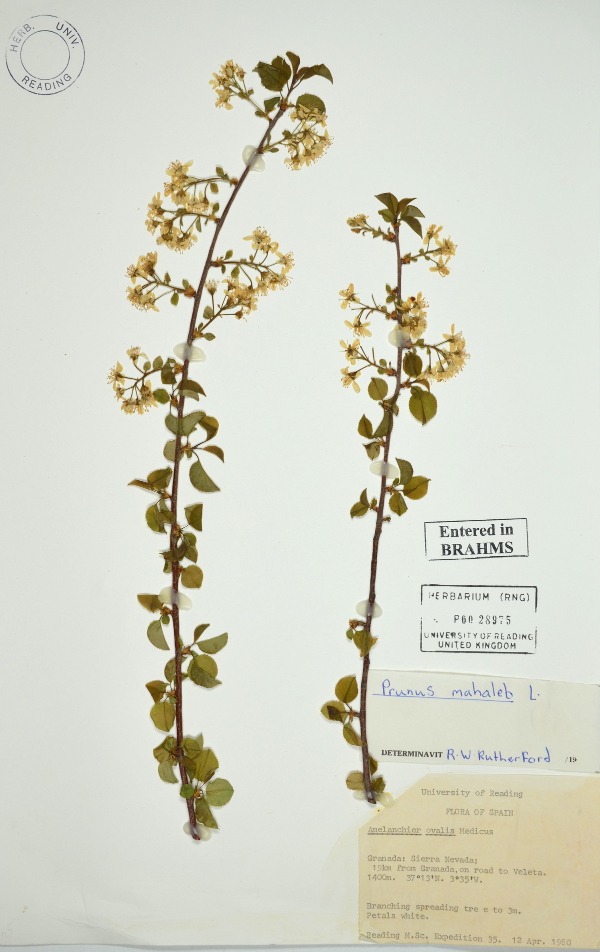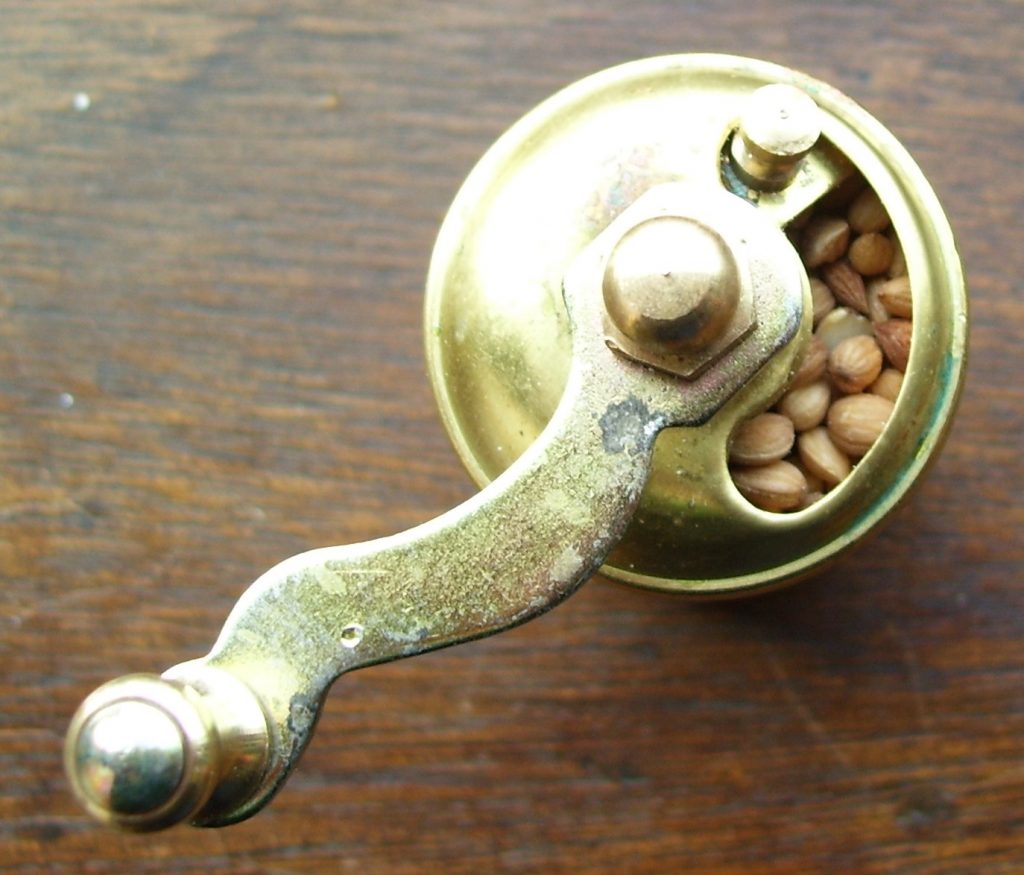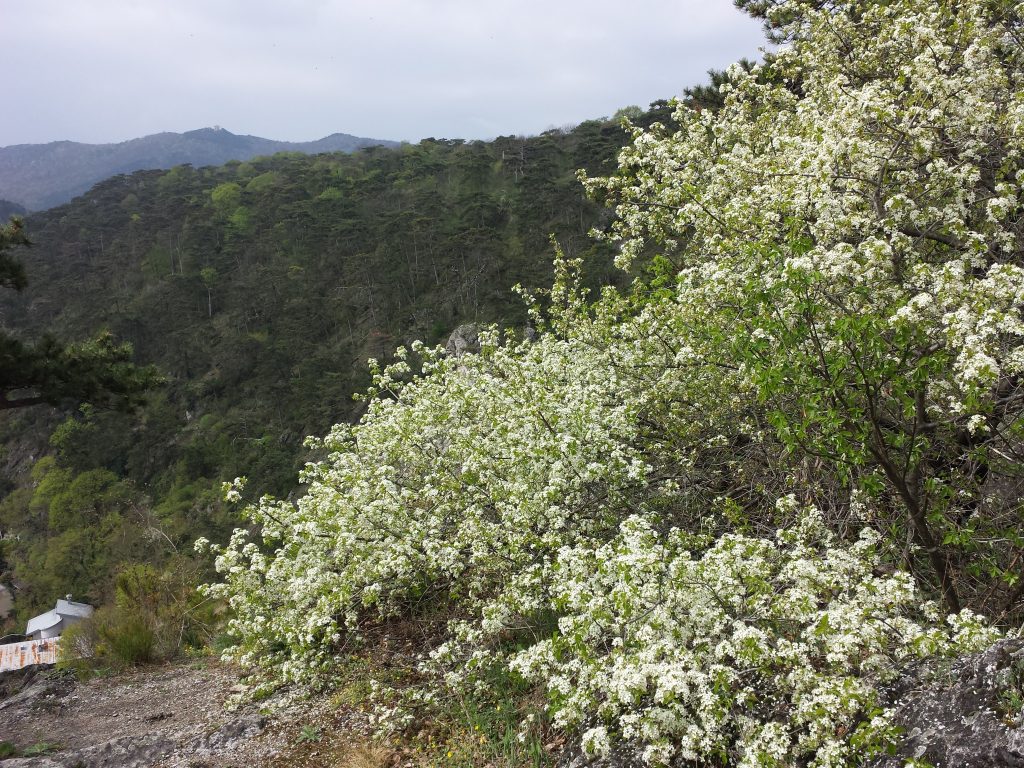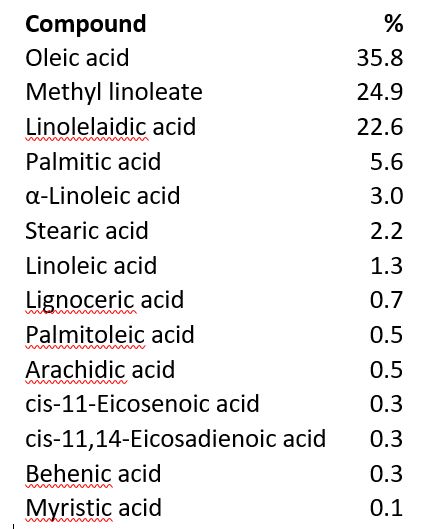By Andrew Bewsey, Jordan Bilsborrow, and Maria Christodoulou
Mahleb is used many festive bakes for its aromatic properties. Found in texts dating to the medieval times, its popularity increased during the expansion of the Ottoman Empire. Prunus mahaleb L., the source of Mahleb, is a species of cherry native to the Mediterranean region and parts of Asia. The trees can grow up to 10m high and are relatively hardy, especially those found found at altitudes of 2000m. The fruit is yellow at first, becoming black later in the season, with a bitter flesh and a smooth stone.

Mahleb spice
The highly scented Mahleb spice is often used in traditional confectionery in the Eastern Mediterranean and the Middle East. To obtaing the spice, the seeds from the cherries are crushed to a fine powder. This white Mahleb powder, together with Mastic and Cardamom form the Holy Trinity of spices for Greek bakers. Due to its similarity to flour, hornswogglers would adulterate it and charge premium prices to unsuspecting customers. Traditional cookbooks advise shoppers to only purchase whole seeds and crush them at home to avoid being cheated. For optimum extraction, seeds could be toasted prior to being crushed along with either sugar or Mastic.

There is a strong link to the festive season, particularly the celebration of St Basil (who is the Greek equivalent of Santa Claus). On the 1st of January Greek families prepare a Vasilopita in honour of the hard-working Saint; a rich, sweet bread baked with a coin inside. Whoever finds the coin in their slice is considered lucky for the New Year. In the Middle East it is widely used in festive desserts such as Ma’amoul which is a fruit and nut filled pastry eaten during Ramadan and at Eid. If you wish to attempt a traditional bake for St Basil this year, a recipe can be found here.
In Saudi Arabia, it also has cosmetic uses, mixing the powder with henna to produce traditional wedding tattoos. The extracted oil from seeds is also considered nourishing for hair.
Editor’s note – Chemistry and more cookery


The chemistry of mahleb seeds is now well studied and it is evident that the chemistry varies among areas and varieties. The fatty acid composition of seeds of yellow, red, and black colored Prunus mahaleb fruits in Turkey shows considerable variation (Ercisli & Orhan, 2008). Yellow and red mahaleb contain around 33% Linoleic acid while about 33% oleic acid was the dominant fatty acid for seeds obtained from black coloured fruits. This shows that it’s important to source your mahleb from the right place to get the flavour you want.
That chemistry gives flavours to cakes (Vasilopita a New year cake containing a coin) and breads (Tsoureki a Greek Easter bread) that use mahleb as a flavouring.
References
Dimitra’s Dishes https://www.dimitrasdishes.com/vasilopita-cake-new-years-cake-no-yeast/ (accessed 1 December 2020)
Castella, K. https://www.epicurious.com/recipes/food/views/vasilopita-361412 (accessed 1 December 2020)
Ercisli, S., Orhan, E. (2008). Fatty acid composition of seeds of yellow, red, and black colored Prunus mahaleb fruits in Turkey. Chem Nat Compd 44, 87–89 https://doi.org/10.1007/s10600-008-0024-x
Giannopoulos, E.K. https://www.mygreekdish.com/recipe/tsoureki-recipe-traditional-greek-easter-bread/ (accessed 1 December 2020)
